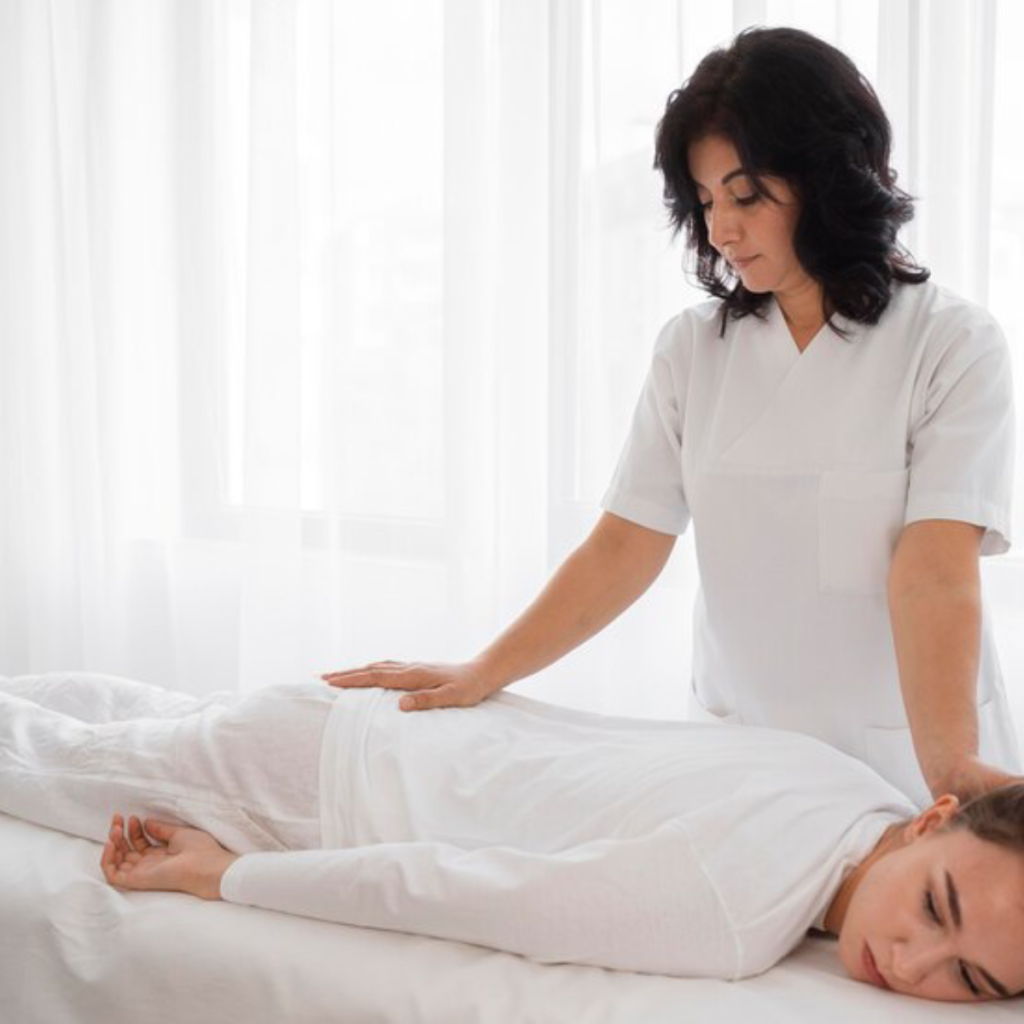Learn effective preventive measures to reduce back pain after receiving an epidural.
Preventive Measures to Reduce Back Pain After Receiving an Epidural
Epidural. The word alone can send shivers down your spine. Okay, maybe not literally, but if you’ve ever had one, you know the feeling. You may have experienced back pain after receiving this miracle of modern medicine. But fear not! In this article, we’ll explore the preventive measures you can take to reduce that pesky back pain and get back to feeling like your old, pain-free self.

Understanding Epidural and Its Effects
What is an Epidural?
Let’s start with the basics. An epidural is a medical procedure commonly used during childbirth or for managing chronic pain. It involves injecting medication into the epidural space of your spine, providing relief from pain. The epidural space is the area between the protective covering of the spinal cord and the vertebrae. By targeting this specific area, the medication can directly numb the nerves responsible for transmitting pain signals, allowing you to experience pain relief.
During childbirth, an epidural can be administered to help manage the pain of contractions. It is a popular choice among many women as it provides effective pain relief while allowing them to remain alert and present during the birth of their child. For individuals with chronic pain conditions, such as herniated discs or spinal stenosis, an epidural can provide long-lasting relief, allowing them to regain mobility and improve their quality of life.
Common Side Effects of Epidural
Before we dive into the nitty-gritty of back pain, let’s take a quick look at some common side effects you might experience after receiving an epidural. These can include temporary numbness or tingling in your legs, headaches, and a drop in blood pressure. It’s important to note that these side effects are typically temporary and subside on their own.
The temporary numbness or tingling in the legs occurs because the medication used in the epidural can affect the nerves responsible for sensation. This sensation usually resolves once the medication wears off. Headaches can occur if the epidural needle accidentally punctures the membrane surrounding the spinal cord, causing a small leak of cerebrospinal fluid. However, this is a rare occurrence and can be treated with bed rest, fluids, and pain medication. A drop in blood pressure is another common side effect of epidurals, as the medication can cause relaxation of blood vessels. This is usually managed by administering fluids or medications to stabilize blood pressure.
It’s important to remember that while these side effects may occur, they are outweighed by the benefits of pain relief that epidurals provide. Your healthcare provider will closely monitor you during the procedure to ensure your safety and comfort.
The Connection Between Epidural and Back Pain
Why Does Epidural Cause Back Pain?
So, you’ve had an epidural, and now you’re wondering why your once-content back is suddenly staging a rebellion. Well, it turns out that the epidural needle can cause irritation in the surrounding tissues, leading to inflammation and, you guessed it, back pain. But don’t despair just yet! There are ways to tame this unruly pain beast.
Long-Term Impact of Epidural on Back Health
While it’s true that receiving an epidural can be a pain in the back, studies have shown that the long-term impact on your back health is minimal. So, take a deep breath and relax. It’s time to focus on preventive measures.
Preventive Measures to Minimize Back Pain Post-Epidural
Importance of Physical Activity
Get moving, folks! Engaging in regular physical activity can do wonders for your back. Talk to your healthcare provider about appropriate exercises to strengthen your back muscles and improve your posture. Remember, a healthy back is a happy back!
Physical activity not only helps to strengthen your back muscles but also improves blood circulation, which can aid in the recovery process post-epidural. Incorporating exercises that focus on core strength, such as yoga or Pilates, can provide additional support to your spine. Additionally, low-impact exercises like swimming or walking can help to alleviate pressure on your back while still providing the benefits of physical activity.
Furthermore, physical activity releases endorphins, also known as the “feel-good” hormones, which can help reduce stress and improve your overall well-being. So, lace up those sneakers and get ready to give your back the love it deserves!
Proper Posture and Its Role
Stand up straight, shoulders back, head held high! Maintaining proper posture throughout the day can help alleviate back pain. Investing in an ergonomic chair or using lumbar support can also make a world of difference. Be the posture police and show your back who’s boss!
Proper posture not only reduces the strain on your back but also helps in maintaining the alignment of your spine. When you slouch or hunch over, it puts unnecessary pressure on your vertebrae and can lead to discomfort and pain. By consciously practicing good posture, you can prevent these issues and promote a healthy back.
In addition to using supportive chairs and cushions, incorporating regular stretching breaks throughout your day can also help improve your posture. Simple stretches like shoulder rolls, neck stretches, and standing backbends can relieve tension and promote proper alignment. So, stand tall and proud, and let your back reap the benefits!
The Role of Hydration and Nutrition
Quench that thirst and feed your body with nutritious foods! Staying hydrated and eating a balanced diet can promote overall back health. Did you know that water is like a magical elixir that helps lubricate your joints? And don’t forget to include foods rich in calcium and vitamin D, which are essential for strong bones. Your back will thank you!
Hydration plays a crucial role in maintaining the health of your intervertebral discs, which act as shock absorbers for your spine. Drinking an adequate amount of water throughout the day ensures that these discs stay hydrated and maintain their elasticity, reducing the risk of back pain.
When it comes to nutrition, incorporating foods rich in calcium and vitamin D can help strengthen your bones, including those in your spine. Dairy products, leafy greens, and fortified cereals are excellent sources of calcium, while sunlight exposure and fatty fish like salmon or mackerel provide vitamin D. By nourishing your body with these nutrients, you are providing the foundation for a strong and healthy back.
Additionally, maintaining a healthy weight through proper nutrition can also alleviate strain on your back. Excess weight can put additional pressure on your spine, leading to increased discomfort and potential injury. By adopting a balanced diet and maintaining a healthy weight, you are taking proactive steps to support your back’s well-being.
Non-Pharmacological Pain Management Techniques
Living with chronic pain can be challenging, but there are various non-pharmacological techniques that can help alleviate discomfort and improve your quality of life. In this article, we will explore some of the most effective and popular methods for managing pain without relying on medication.
Benefits of Heat and Cold Therapy
When it comes to finding relief for your achy back, the age-old question arises: hot or cold? The truth is, both heat and cold therapy can provide much-needed relief, but the key is finding what works best for you.
Heat therapy, such as using hot packs or taking a warm bath, can help relax muscles, increase blood flow, and reduce stiffness. The soothing warmth can penetrate deep into the tissues, providing a comforting sensation that eases pain and promotes healing.
On the other hand, cold therapy, often in the form of cold compresses or ice packs, can help numb the area, reduce inflammation, and minimize swelling. The cold temperature constricts blood vessels, which can help alleviate pain and reduce muscle spasms.
Experimenting with both heat and cold therapy can be beneficial. Some individuals find that alternating between the two provides the best results. For example, you might start with a cold compress to reduce inflammation, followed by a warm pack to relax the muscles. Finding the right combination can help you kiss that back pain goodbye!
The Effectiveness of Massage Therapy
Imagine lying on a comfortable massage table, soft music playing in the background, as a skilled therapist kneads away your back pain. Ahh, the bliss! Massage therapy is not only a luxurious treat but also an effective pain management technique.
Massage therapy involves the manipulation of soft tissues, such as muscles and tendons, using various techniques. The pressure applied during a massage can help reduce muscle tension, improve blood circulation, and promote relaxation.
By targeting specific areas of pain or discomfort, a massage therapist can help alleviate muscle knots, release tension, and improve overall mobility. The soothing strokes and gentle kneading can also stimulate the release of endorphins, the body’s natural painkillers, providing a sense of well-being and relief.
Regular sessions of massage therapy can have long-lasting effects on chronic pain. Not only does it provide immediate relief, but it can also help manage pain over time by addressing underlying issues and promoting a healthier musculoskeletal system.
So, why not treat yourself to a massage and say hello to a pain-free back? Whether you choose a Swedish massage, deep tissue massage, or any other technique, the benefits of massage therapy extend beyond relaxation and can significantly improve your quality of life.

When to Seek Medical Attention
Experiencing back pain after an epidural can be a common occurrence, but it’s important to know when it’s necessary to seek medical attention. While most cases of post-epidural back pain are nothing to lose sleep over, there are certain symptoms that should not be ignored.
If your back pain is severe and debilitating, it may be an indication of a more serious underlying issue. In such cases, it is crucial to contact your healthcare provider for further evaluation and guidance. Remember, your health and well-being should always be a top priority.
In addition to severe pain, there are other symptoms that may warrant medical attention. If you experience a fever along with your back pain, it could be a sign of infection. Numbness or weakness in your lower extremities may indicate nerve compression or damage, which should be addressed promptly by a medical professional.
Furthermore, if your back pain persists for an extended period, it is essential to consult with your healthcare provider. Chronic pain can significantly impact your quality of life and may require specialized treatment or management strategies.
The Importance of Regular Check-ups
While it’s tempting to neglect your back once the pain subsides, it is crucial to prioritize regular check-ups with your healthcare provider. These check-ups serve as an opportunity to assess your back health and address any lingering discomfort or concerns.
During these appointments, your healthcare provider can evaluate the effectiveness of any previous treatments or interventions and make necessary adjustments. They can also provide guidance on proper posture, exercises, and lifestyle modifications that can help alleviate back pain and prevent future issues.
Regular check-ups are especially vital if you have a history of back problems or if you engage in activities that put strain on your back, such as heavy lifting or prolonged sitting. By staying proactive and maintaining open communication with your healthcare provider, you can effectively manage your back health and minimize the risk of recurring pain.
So there you have it, folks! Follow these preventive measures, and you’ll be on your way to back-pain freedom. Remember, even though an epidural may have caused a temporary hitch in your giddy-up, it doesn’t have to be a lifelong struggle. Take charge of your back health, prioritize regular check-ups, and live life pain-free!



